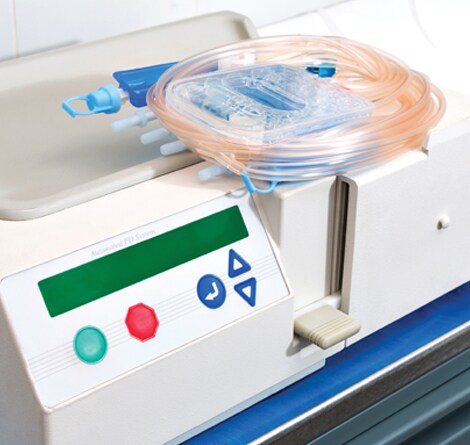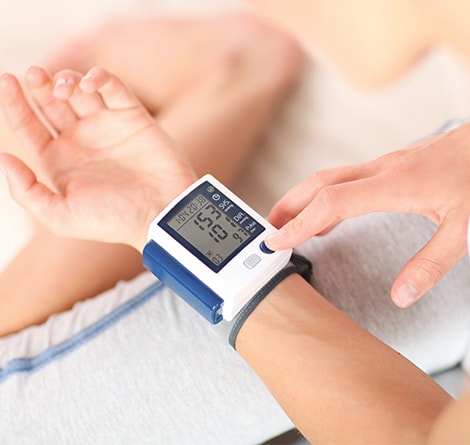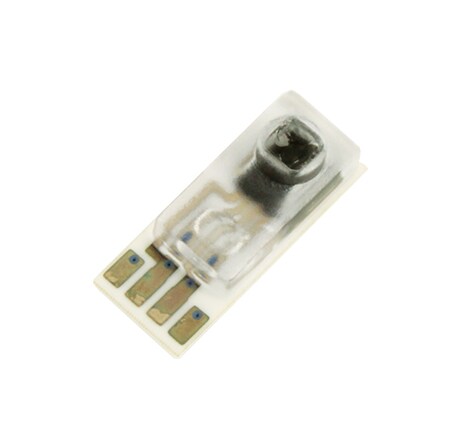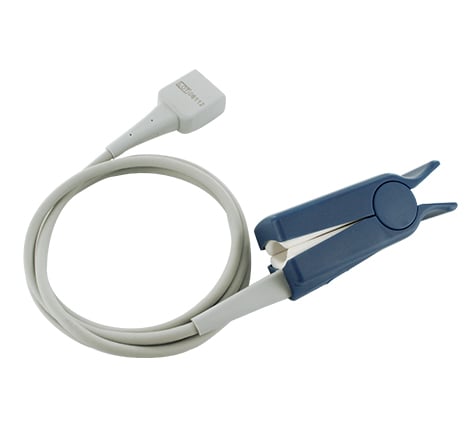
Application
Next-Generation Patient Care
With TE Connectivity (TE) sensors, medical device manufacturers can develop home-health monitoring devices that enable patients to live healthier, more mobile lives.
Author:
Brian Ream, Principal Field Applications Engineer, Sensors
During the 20th century, medical innovation was happening in every area – from new pharmaceuticals to advancements in patient care. For example, in 1935, the first cardiopulmonary bypass was performed on a cat by Dr. John Gibbon, Jr., which led to his successful use of the device in 1953 on human patients. In 1952, Paul Zoll’s development of the first cardiac pacemaker allowed treatment of irregular heartbeats by implantation of a device into the patient. Since the early 1980’s cardiac ablation, allowing treatment of irregular heart rhythms by altering the electrical circuits of the heart itself has become feasible. As a result, heart-attack prevention through coronary bypass surgery developed quickly from 1953 onward, and by the year 2000, the American Heart Association reported nearly 600,000 U.S. patients underwent bypass surgery each year. Around this time, new ideas emerged for administering bypass procedures with less impact on patients, which meant performing the procedure without needing to stop the patient’s heart and without needing to open the chest. From these ideas come new techniques and technologies that are improving medical procedures and enabling patients to recover faster.
Impact on Healthcare Practices
Advances in technology are changing what doctors can do – and where they can do it. Traditionally, physicians have provided medical care in sophisticated medical centers and science facilities equipped with advanced medical instruments. However, the size, cost, and operational complexity of these instruments means that patients had to travel to visit the instruments. Today, doctors can more easily provide – as they once did, decades ago – patient diagnosis, monitoring, and treatment in the home. This places less stress on the patient, reduces a patient’s risk of exposure to infections, and allows them to recover in the relative comfort and safety of their own homes. Medical device manufacturers are recognizing these advantages and increasingly developing medical products specifically designed for in-home use. Our Sensors engineers at TE work closely with these manufacturers to develop the technology needed to integrate complex systems for IoT applications.
Home Health Applications
These advancements transformed patient treatment. Rather than treating patients for symptoms of diseases, which was effectively offering long term palliative care in the patient’s home, doctors now could often “cure” patients. The devices they used, however, were expensive and only possible to offer at the treatment centers. This led to a boom in hospital and clinic construction, and as a result, patients had to visit the medical center to receive medical services. With this change, patients are now exposed to hospital acquired infections (HAI) at a rate of up to 1 in 25 patients, and in many cases, a depersonalization of patient services. Modern hospitals continue to address HAI with improved antiseptic procedures but in doing so, may also create a “sterile” patient environment when it comes to patient personal interaction. Organizations have attempted to address this with more personalized services and improved focus on patient services, but the reality remains that most patients, if given a choice, would rather be at home.
Advances in technology are changing what doctors can do – and where they can do it.
Today, medical device manufacturers are recognizing patient preferences and opportunities that servicing patients in their home provide. In addition to getting more personalized care, patients can significantly reduce the cost of getting the services they need – in the comfort of their home. While doctors cannot provide all medical services in the home, they can perform a surprising number of common procedures in the home. One example is dialysis. Because of the nature and frequency of dialysis treatment, patients must commit significant blocks of time to receiving their life-saving therapy. To help ease the burden of going to a facility for these treatments, and help reduce the patient’s risk of infection, many dialysis manufacturers are designing dialysis equipment specifically for home use.


Multiple companies are developing products to allow in-home patient monitoring through wearable monitoring systems, or patient self-performance of certain vital sign measurements. These measurements are logged into an in home system, and relayed to stations that are monitored by clinicians. If the clinician detects abnormal readings, they can request the patient to come into the clinic for follow up treatment. These particularly benefit older patients living alone. They can enjoy a better quality of life uncompromised by concerns around falling. Sensor-equipped monitors can detect activity and location, which helps bring peace-of-mind for the homebound and their families, knowing that care can be automatically dispatched in the event of an emergency. The new technology for home healthcare is also enabling individuals to better monitor and manage their physical well-being. With fitness tracking devices nearly ubiquitous, it is common to hear other discussing the activity they recorded on their devices. The next generation of home-healthcare electronics promises to provide a more detailed picture of our health so that we can detect – early and with clarity – possible health issues.
Role of Sensors
TE sensors are similar to receptors of the central nervous system of major medical devices in hospitals, monitoring multiple key parameters critical to proper equipment operation and patient survival. These sensors are designed into applications where failure is not an option, as patient’s lives are at stake. Since the early commercial heart lung machines, our sensors have monitored the temperature of the blood flow returning to the body. For patient warming/cooling applications our pressure sensors and temperature sensors confirm proper functioning of the device. In dialysis equipment, pressure, force and temperature sensors monitor critical parameters. Based on this long history with equipment manufacturers, use of these sensors have extended into home healthcare equipment. In these devices, sensors play an even more critical role. Since trained clinicians are less directly involved in patient monitoring, healthcare professionals and medical centers are increasingly relying on sensor-equipped instruments to track and detail patient health with minimal risk to the patient. By adding sensors to home health device, they become smarter, capable of being integrated with other systems and communicating critical information remotely. In each application, manufacturers have identified key parameters that must be measured and controlled for proper instrument function in a home setting.


Some examples of these sensors include, temperature, pressure, force and bubble detection sensors in dialysis equipment. Each of these sensors allow the equipment to monitor and control its own function to the point that a patient can be trained to operate the complex equipment successfully. Piezo film sensing technology allows bedridden patient monitoring for activity, respiration, and movement. Patients are also monitored for temperature and SpO2 using application specific sensors. For fall detection and activity tracking, sensitive pressure sensors that can detect small changes in altitude are used to differentiate between vertical and horizontal positions or to “count” the number of stairs climbed in a day. For congestive heart failure monitoring, weight gain driven by fluid retention is a key parameter to monitor. Precision force sensors allow remote monitoring of daily weight fluctuations that could indicate cardiac difficulties. As sensor technology advances, further and further intelligence can be added to devices to allow simplified use of a complex piece of equipment. With TE’s broad line of sensors, integration into multiple parameter sensors is feasible. What the future holds for in home medical applications seems ever expanding.
Featured TE Sensors
Working Closely with Manufacturers
TE has a long history in supporting medical equipment designs. Our experienced engineers work closely with designers to develop multi-function sensor technologies that help advance healthcare in ways that are less intrusive and inconvenient for patients while providing peace of mind that their health is being monitored more effectively and any help they may need is quickly accessible.


